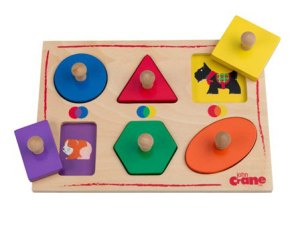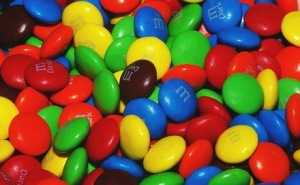Archive for the ‘Topic 2 – Numbers’ Category
Division
What is division?
“Division is used when a person knows the product(the whole) and one factor: that is, dividend – divisor = quotient + remainder”. (Smith, 2009,175)
Example of problems involving division:
Question

- Emma has 6 lollipops. He then shares evenly with three of his friends. How many lollipops does each of them get?
2. Peter has 20 apples. He gives two apples to each of his students. How many students does he has?
Reference
Picture
Divide symbol, retrieved from http://images.all-free-download.com/images/graphiclarge/symbol_divide_vote_clip_art_11268.jpg
Lollipops, retrieved from http://acelebrationofwomen.org/wp-content/uploads/2010/07/Lollipops-5.jpg
Three kids, retrieved from http://picture-book.com/files/userimages/872u/26threekids.gif
Multiplication
Multiplication is the operation used to find a product when two factors: that is, factor x factor= product” (Smith, 2009,p175)
First time I learn multiplication was during my Year 3 in primary school. That time my teacher did not explain what ‘multiplication’ really is. She just asked us to memorize the multiplication chart”. So, in the mathematics’ class, I need to memorize the multiplication timetable in order to answer the question. This technique was really helpful and efficient for me. I was able to complete problems in multiplication questions as a result of memorizing the table.
When exploring this topic, I have found group of videos that can help children to memorize the multiplication. This is the video:
Reference
Smith, S, S(2009). Early Childhood Mathematics(4th edition). Pearson.
picture
Symbol of multiplication retrieved from http://upload.wikimedia.org/wikipedia/commons/thumb/5/5e/Symbol_multiplication_vote.svg/583px-Symbol_multiplication_vote.svg.png
Multiplication time table. Retrieved from http://www.popartuk.com/g/l/lg2038+multiplication-times-table-poster.jpg
video
Award winning videos on multiplication. Retrieved from http://www.youtube.com/watch?v=7VN26qrATG0
Addition and Subtraction
Posted on: August 24, 2010
Addition
Learning about addition is among the first basic knowledge that children should have.
This is the virtual activity (addition games)that I have found interesting to create more understanding and improve children’s skills in solving addition process.
Subtraction
Learning about addition always come with learning on subtraction. If “increase” and “add” is the key words of addition process, in contrast, in subtraction,the concepts that children need to understand is about the number “decrease” and “become less”
Interactive websites on addition and subtraction:
http://www.teachingideas.co.uk/maths/contents06additionsubtraction.htm
Mental Computation Strategies
What is mental computation
When people hear the term “mental computation” many think of the mental arithmetic problems they did at school. Mental arithmetic focuses on producing correct answers quickly. While not neglecting the correctness of the answer, mental computation emphasises the mental processes used to achieve the answer. To develop mental computation in the classroom, teachers can encourage students to explain how they arrived at their answers and to compare their strategies with those of other students.
(NSW Department of Education and Training, 2010)
What is subitizing?
From what I understand from EAB023 class, subitizing is the sudden describe or recognizing certain patterns in mathematics calculation.
“Subitizing is way of manipulating numbers. It is not counting items individually for example, but in groups. Utilizing visualization, it is recognizing an amount rather than counting it”
(Caroline Post, 2010)
Below are several techniques and activities that i have done in tutorial regarding to mathematical computation including subitizing.
Number line
Number line can be use in addition and subtraction. In primary school, students may have difficulties on how to use the number line. There are tehniques and method in using number line effectively.
I have found a video that demonstrates how to use a number line for the children:
Hundred Chart

hundred chart
Ten frames

ten frames
Reference
Caroline Post, (2010), Retrieved from Subitizing is Part of Math Starting in the Early Years of School http://early-childhood-development.suite101.com/article.cfm/subitizing-is-part-of-math-starting-in-the-early-years-of-school#ixzz0xTW1DXVS
Picture
Symbols. Retrieved from http://etsp.k12.ar.us/math/PublishingImages/math02.gif
Number line retrieved from http://illuminations.nctm.org/lessons/dominoes/frogline-smaller.jpg
Hundred chart. Retrieved from https://adyfendy.wordpress.com/wp-content/uploads/2010/08/chart-hundreds.jpg?w=250
Ten frames. Retrieved from http://mindfull.files.wordpress.com/2008/03/counting.jpg
Developing number concepts
Posted on: August 24, 2010
- Identifying – describing attributes
- Matching- sameness
- sorting
- comparing
- ordering
- patterning
Picture Reference
Sorting. Retrieved from http://www.searchenginepeople.com/wp-content/uploads/2008/05/mixed-mm.jpg
Comparing. Retrieved from http://farm2.static.flickr.com/1014/1046115438_87377e1a94.jpg
http://www.bambinipronto.com.au/database/images/colour-shape-matching-main-1205.jpg
Ordering. Retrieved from http://people.exeter.ac.uk/PErnest/soccon.htm
Teacher’s role in developing an understanding of numbers and operations Copley et al(2007, p10,11),
- Practice counting using a variety of learning styles and representations
- Using rhymes and verses that integrates physical involvement.
- Provide a variety of materials to help children develop an understanding of quantity
- Prepare board games
- Model counting strategies
- Teachers demonstrate the right counting strategies
- Identify and use everyday situations
- Manipulate students’ routines and use them as examples to mathematics problems
- act out operation stories
- teachers act out or ask students to act out stories that related to mathematics problem to help in problem solving
- make obvious mistakes so that children can identify the error
to check for their understanding, makes obvious error in calculation or maths problem in order to make them detect the mistakes(eg- 20 is bigger than 100)
more article on basic number facts and operations
http://s22318.tsbvi.edu/mathproject/ch2.asp#main
Reference
Copley, Jones & Dighe,(2007), mathematics-the creative curriculum approach, Teaching strategies inc. Washington DC, 2007
Counting Principles
Posted on: August 24, 2010
In searching for further information about counting principles, I have come to an article by Narmasse et al.
Narmasse et al stated that, there are five counting principles based on work by Gelman and Galistel (1978):
1.The one-to-one principle
“A child has to coordinate two processes, partitioning and tagging. This simply means that every item being counted needs to be transferred from the to-be-counted category o the counted category (partitioning) while a distinct tag must be set aside, not to be used again in the counting sequence (tagging). Children employ many strategies to facilitate the coordination of partitioning and tagging, pointing to the objects and stating at the same time the associated number word is a common one.”
2. The stable-order principle
“Counting involves more than the ability to assign arbitrary tags to the items in an array. The counting tags chosen must be arranged in stable (i.e. repeated) order. For example, the child might count three objects stating “one, three, four” and four objects by stating “one, three, four, five.”
3. The cardinal principle
This principle reflects the child’s understanding that the last number word of an array of counted items has a special meaning: it represents the set as a whole and the numerosity of this set of items
4. The abstraction principle
The realization of what is counted is reflected in this principle. A child should realize that counting could be applied to heterogeneous items like toys of different kinds, color, or shape and demonstrate skills of counting even actions or sounds!
5. The order-irrelevance principle
The child has to learn that the order of enumeration (from left to write or right to left) is irrelevant. Consistent use of this principle does not seem to emerge until 4 or 5 years of age (German and Galistel, 1978).
More reading that I have done
Reference
Narmasse et al (2010), http://web.media.mit.edu/~stefanm/society/som_final.html
Early Number Sense
Posted on: August 24, 2010
Numbers and operations
Numbers and operations concepts involve nine different ideas.
1. Counting
2. Quantity (sense of number)
3. Comparisons (more/fewer/less)
4. Order
5. Numerals
6. Combining operations(adding)
7. Separating operations(substracting)
8. Sharing operations(dividing)
9. Set-making operations(multiplying)
According to Copley et al(2007, p7), to count well children need to master three basic things:
1. The number sequence
2. One-to-one correspondence
3. The last number named when counting a set of objects
Number sense
“Refers to a person’s understanding of number concepts, operations, and applications of numbers and operations. It includes the ability and inclination to use this understanding in flexible ways to make mathematical judgements and to develop useful strategies for handling numbers and operations. Hence, mental computation is closely linked to the development of number sense. Emphasising mental computation supports effective numeracy since mental computation is commonly used for calculations by adults and is the simplest way of doing many calculations“
(NSW Department of Education and Training, 2010)
Reference
Copley, J, V. Jones, C, & Dighe, J (2007). Mathematics-the creative curriculum approach.Teaching strategies inc. Washington DC.
NSW Department of Education and Training, (2010 ). Retrieved on 20 August 2010 from http://www.curriculumsupport.education.nsw.gov.au/primary/mathematics/numeracy/mental/index.htm










